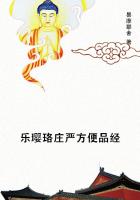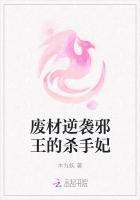To explain the rude and ancient ritual of the Thesmophoria the following legend was told. At the moment when Pluto carried off Persephone, a swineherd called Eubuleus chanced to be herding his swine on the spot, and his herd was engulfed in the chasm down which Pluto vanished with Persephone. Accordingly at the Thesmophoria pigs were annually thrown into caverns to commemorate the disappearance of the swine of Eubuleus. It follows from this that the casting of the pigs into the vaults at the Thesmophoria formed part of the dramatic representation of Persephone's descent into the lower world; and as no image of Persephone appears to have been thrown in, we may infer that the descent of the pigs was not so much an accompaniment of her descent as the descent itself, in short, that the pigs were Persephone. Afterwards when Persephone or Demeter (for the two are equivalent) took on human form, a reason had to be found for the custom of throwing pigs into caverns at her festival; and this was done by saying that when Pluto carried off Persephone there happened to be some swine browsing near, which were swallowed up along with her. The story is obviously a forced and awkward attempt to bridge over the gulf between the old conception of the corn-spirit as a pig and the new conception of her as an anthropomorphic goddess. A trace of the older conception survived in the legend that when the sad mother was searching for traces of the vanished Persephone, the footprints of the lost one were obliterated by the footprints of a pig; originally, we may conjecture, the footprints of the pig were the footprints of Persephone and of Demeter herself. A consciousness of the intimate connexion of the pig with the corn lurks in the legend that the swineherd Eubuleus was a brother of Triptolemus, to whom Demeter first imparted the secret of the corn. Indeed, according to one version of the story, Eubuleus himself received, jointly with his brother Triptolemus, the gift of the corn from Demeter as a reward for revealing to her the fate of Persephone. Further, it is to be noted that at the Thesmophoria the women appear to have eaten swine's flesh. The meal, if I am right, must have been a solemn sacrament or communion, the worshippers partaking of the body of the god.
As thus explained, the Thesmophoria has its analogies in the folk-customs of Northern Europe which have been already described. Just as at the Thesmophoriaan autumn festival in honour of the corn-goddessswine's flesh was partly eaten, partly kept in caverns till the following year, when it was taken up to be sown with the seed-corn in the fields for the purpose of securing a good crop; so in the neighbourhood of Grenoble the goat killed on the harvest-field is partly eaten at the harvest-supper, partly pickled and kept till the next harvest; so at Pouilly the ox killed on the harvest-field is partly eaten by the harvesters, partly pickled and kept till the first day of sowing in spring, probably to be then mixed with the seed, or eaten by the ploughmen, or both; so at Udvarhely the feathers of the cock which is killed in the last sheaf at harvest are kept till spring, and then sown with the seed on the field; so in Hesse and Meiningen the flesh of pigs is eaten on Ash Wednesday or Candlemas, and the bones are kept till sowing-time, when they are put into the field sown or mixed with the seed in the bag; so, lastly, the corn from the last sheaf is kept till Christmas, made into the Yule Boar, and afterwards broken and mixed with the seed-corn at sowing in spring. Thus, to put it generally, the corn-spirit is killed in animal form in autumn; part of his flesh is eaten as a sacrament by his worshippers; and part of it is kept till next sowing-time or harvest as a pledge and security for the continuance or renewal of the corn-spirit's energies.
If persons of fastidious taste should object that the Greeks never could have conceived Demeter and Persephone to be embodied in the form of pigs, it may be answered that in the cave of Phigalia in Arcadia the Black Demeter was portrayed with the head and mane of a horse on the body of a woman. Between the portraits of a goddess as a pig, and the portrait of her as a woman with a horse's head, there is little to choose in respect of barbarism. The legend told of the Phigalian Demeter indicates that the horse was one of the animal forms assumed in ancient Greece, as in modern Europe, by the cornspirit. It was said that in her search for her daughter, Demeter assumed the form of a mare to escape the addresses of Poseidon, and that, offended at his importunity, she withdrew in dudgeon to a cave not far from Phigalia in the highlands of Western Arcadia. There, robed in black, she tarried so long that the fruits of the earth were perishing, and mankind would have died of famine if Pan had not soothed the angry goddess and persuaded her to quit the cave.
In memory of this event, the Phigalians set up an image of the Black Demeter in the cave; it represented a woman dressed in a long robe, with the head and mane of a horse. The Black Demeter, in whose absence the fruits of the earth perish, is plainly a mythical expression for the bare wintry earth stripped of its summer mantle of green.
3. Attis, Adonis, and the Pig.
PASSING now to Attis and Adonis, we may note a few facts which seem to show that these deities of vegetation had also, like other deities of the same class, their animal embodiments. The worshippers of Attis abstained from eating the flesh of swine. This appears to indicate that the pig was regarded as an embodiment of Attis. And the legend that Attis was killed by a boar points in the same direction. For after the examples of the goat Dionysus and the pig Demeter it may almost be laid down as a rule that an animal which is said to have injured a god was originally the god himself. Perhaps the cry of Hyes Attes! Hyes Attes! which was raised by the worshippers of Attis, may be neither more nor less than Pig Attis! Pig Attis!hyes being possibly a Phrygian form of the Greek hyˉs, a pig.















